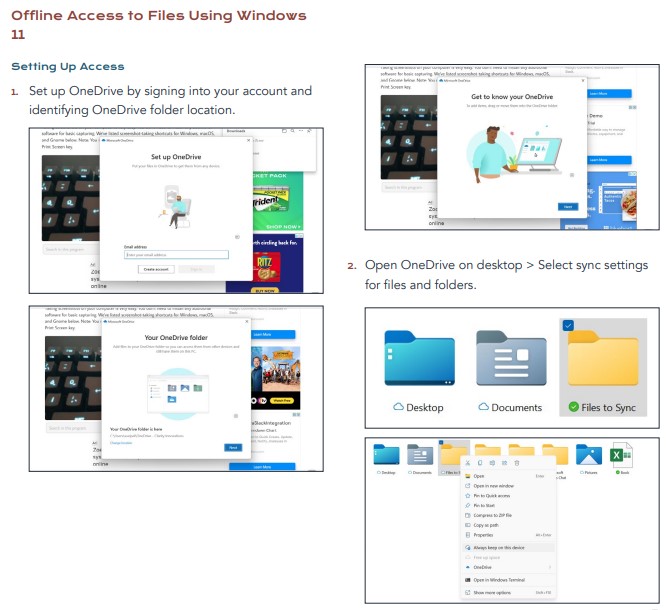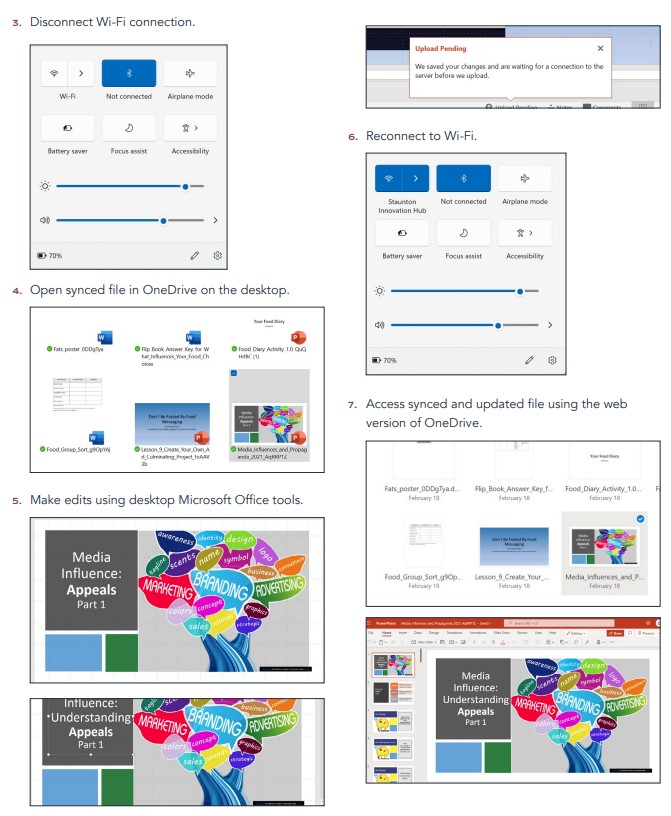Driving equity with online-ready, not online-dependent devices
Providing continuity of learning in low and intermittent connectivity scenarios
Millions of students have limited access to the internet at home, leaving them struggling to access interactive online lessons and forcing them to find offline workarounds on devices lacking storage for video and other resources. Today, devices and education technology tools are more integrated into education than ever before, and learning opportunities happen not just at school, but at home and everywhere in between. In this landscape, the ability to work online and offline is key so that learning can continue regardless of a student’s ability to connect to the internet.
In the third in a series of Accelerate Learning Kits from Microsoft Education, “Accelerating Learning for Students with Limited Internet Access,” the authors compare how Microsoft Windows 11 devices and Chromebooks support offline access to educational content and material. Their finding: when comparing based on factors such as access to learning content, accessibility, on-device storage, and the ability to create and edit content, they found that Windows 11 devices provide a better experience for learners than the equivalent experiences on Google Chrome OS.
In a study conducted by Michigan State University in 2020, researchers found that students who have no home access or rely upon cell phone data plans have the digital skills equivalent of a three-year deficit when compared to their peers with home internet access1.”
According to UNICEF, up to 1.3 billion children and young people worldwide have no access to internet at home2. This issue disproportionately affects students of color, those living in poverty, and in rural communities. Additionally, a 2020 study by Michigan State University found that students who have limited or no internet access at home can fall up to three years behind classmates with full access, have a lower grade point average, score lower on college admissions tests like the SAT, and are less likely to pursue a college degree.3 This highlights the importance of ensuring that students have equitable access to tools and that there’s flexibility for those who may not have consistent access to the internet outside of school.
For the latest Microsoft learning kit comparing Windows 11 devices and Chromebooks, researchers created a learning scenario in which they used identical versions of a presentation to compare the process a student would complete to access and edit learning materials while disconnected from the internet. This included setting up offline access to the file, disconnecting the internet connection, opening and making changes to the presentation, and then reconnecting and accessing the updated online file. The comparison of the Windows 11 and Chromebook processes can help educators see some of the benefits Windows 11 devices deliver for students, including simpler and faster setup of offline capabilities.


Evaluators noted that in the side-by-side test, Microsoft Office was a faster, easier, and richer experience for students than the comparable solution. Beyond simply editing and saving files, students with limited online access can benefit from using the built-in flexibility of features such as translation and Accessibility Checker, which work online or offline.

Since schools made the unexpected and rapid shift to online instruction in 2020, existing inequities in connectivity have highlighted the challenges of making sure that all students can participate in digital learning. Microsoft Education is committed to developing solutions to advance equity in learning. And the built-in, accessible, equitable, easy-to-use tools in the Microsoft Office suite provide students the opportunity to focus on learning and explore their academic interests without having to worry about connectivity.
Want to learn more?
The learning kit “Accelerating Learning for Students with Limited Internet Access” is available now, and contains the comparative paper as well as an abstract and an infographic. You can also explore two other Microsoft Education Accelerate Learning Kits: “Checking for Accessibility” and “Accelerate Learning with Workplace Math Skills.” Stay tuned for the next kit in the series, which will be shared soon!










